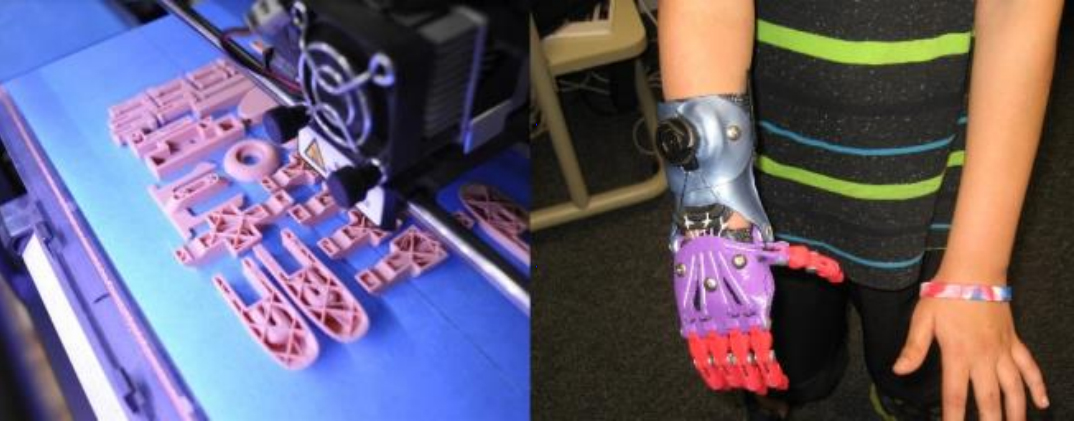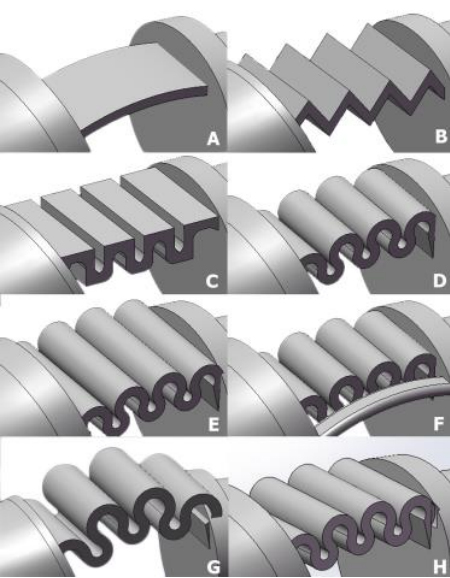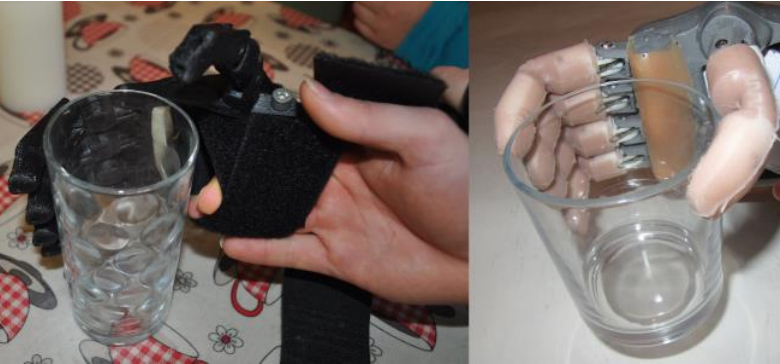3D Printed endoskeleton.
People involved:
- Mahmoud Tavakoli
- Joao Luis Lourenco
- Anibal T. de Almeida
The development of upper limb prosthesis has undergone in recent years a paradigm shift. At the head of this movement are organizations like the Enable Community Foundation [1] which aims to improve the options for those with upper limb (UL) loss or differences. They are doing it by building tools and platforms that support technology empowering crossdisciplinary teams of volunteers who then develop and share their creations for others to use and improve.

3D Printed hand.
Different joint models used for tests and final finger.


Different joint models used for tests and final finger.
In this article, we introduced a novel 3D printed endoskeleton compliant finger to apply to body actuated upper limb prostheses. Major upgrades were made relative to available designs which improves significantly usability of a prosthesis device. Compared to other 3D printed hand models available, the developed solution brings a clear improvement in performance. The fingers are easy to integrate into existing models. In addition to performance the anthropomorphic look and feel of the prosthesis were improved.
Lorem 3D printed endoskeleton with a soft skin for upper-limb body actuated prosthesis.
M. Tavakoli, J. Lourenço and A. T. de Almeida, “3D printed endoskeleton with a soft skin for upper-limb body actuated prosthesis,” 2017 IEEE 5th Portuguese Meeting on Bioengineering (ENBENG), Coimbra, 2017, pp. 1-5. doi: 10.1109/ENBENG.2017.7889470


